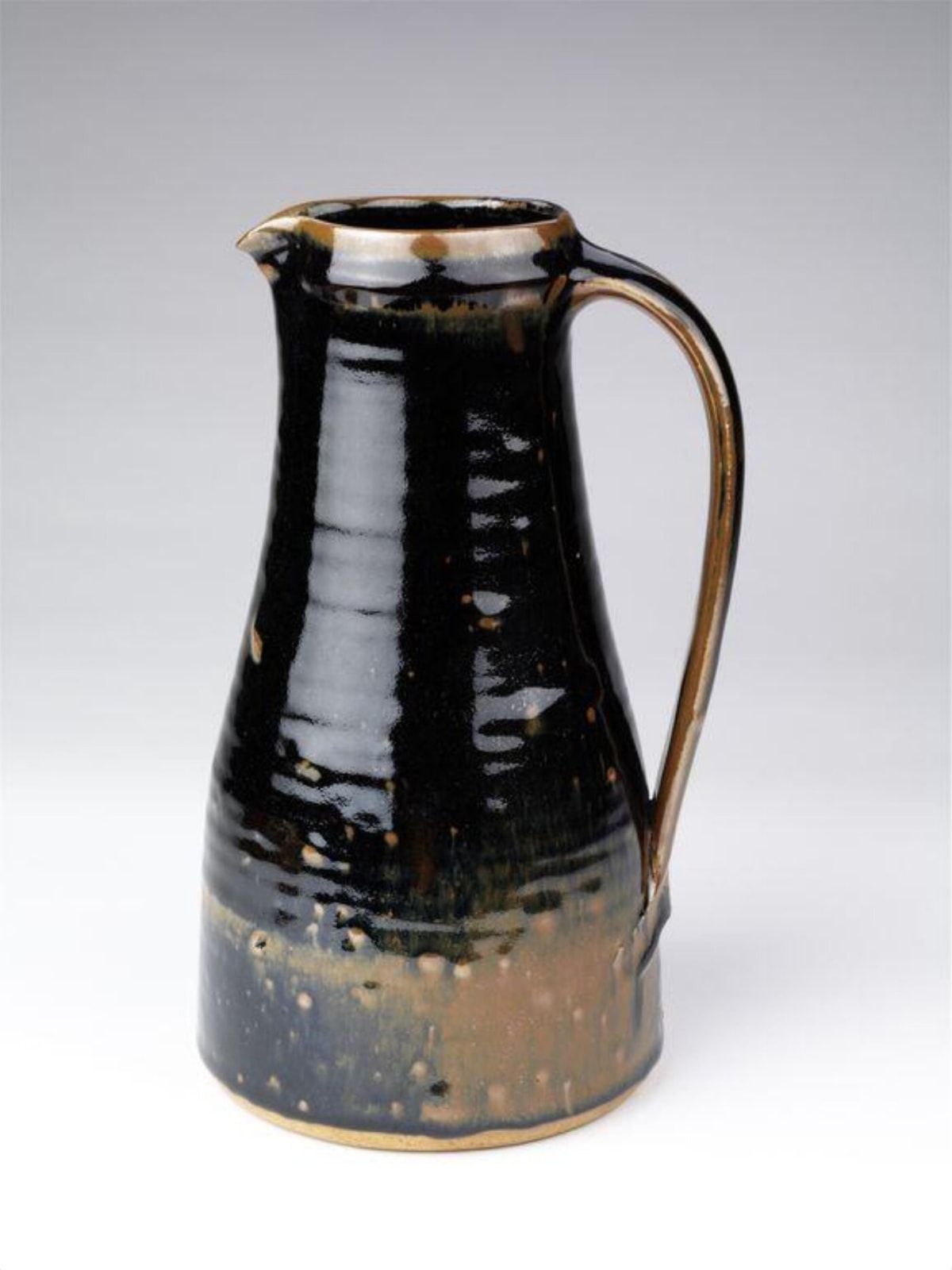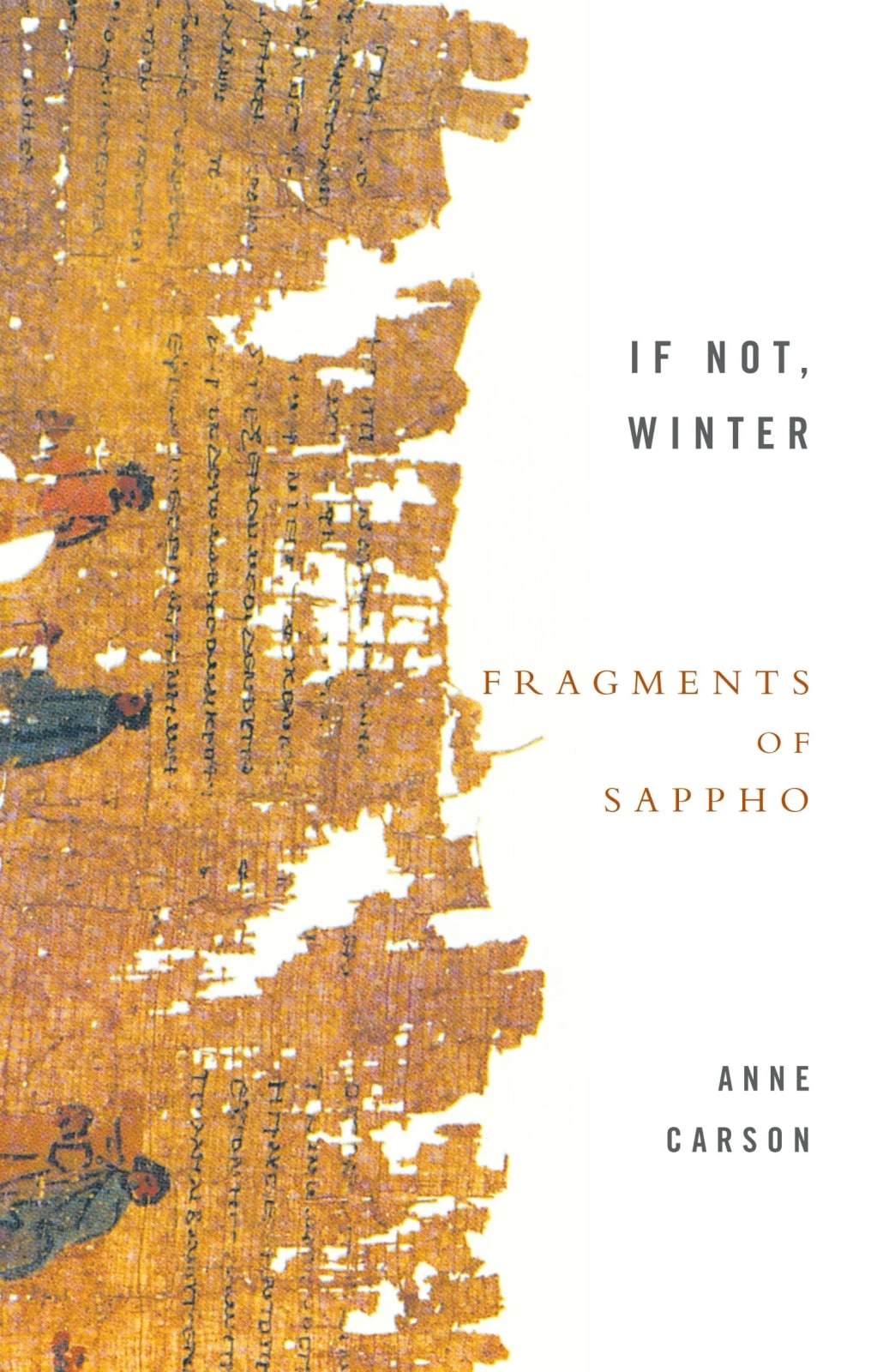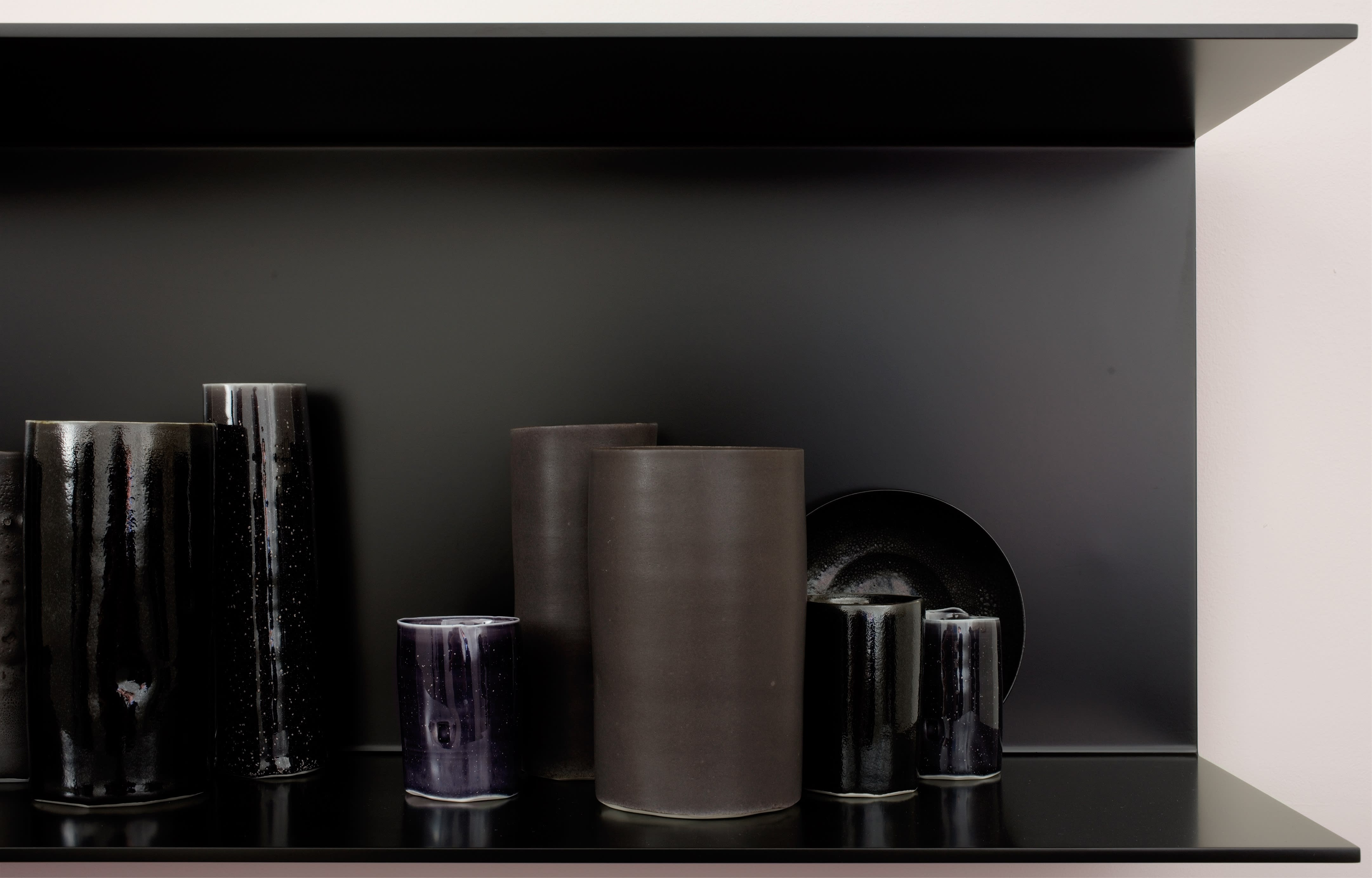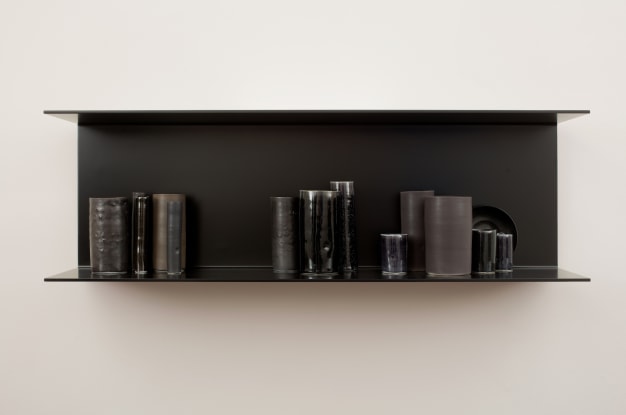Harnessing his gifts as a poignant and sensitive writer, Edmund de Waal employs a range of literary devices to create meaning in his ceramic installations.
InSight No. 151
Edmund de Waal, no speaking is left in me, 2013
A Potter’s Book, written by the celebrated studio potter Bernard Leach and published in 1940, begins with a caveat. ‘Pottery has its own language and inherent laws, and words have theirs, and neither can be bound by the other.’ For Edmund de Waal (b. 1964), whose ceramic installations are partly a response to Leach’s work, the tensions between pottery and language are a rich creative stimulus. He is concerned with the word-like and breath-like qualities of individual pots and the speech-like quality created by groups of ceramics: if a single pot is a word, a gathering of pots is a conversation or discourse. De Waal himself is an accomplished and widely admired author, and verbal or respiratory themes are sometimes vocalised in titles—between two breaths, word for word—that quote from the writings of poets and artists.

The formal clarity of de Waal’s work—white vessels in white cabinets, black vessels on open-sided shelves of black aluminium—contains an abundance of reference, allusion and metaphor. He began making frequent use of black-hued porcelain clay around 2012 and works of this kind have a superficial affinity with Leach’s idiom of oil-spot glazed stoneware, which was in turn a response to ‘blackware’ manufactured in medieval China during the Tang and Song dynasties. (Leach himself acknowledged this stylistic allegiance, baldly identifying ‘the qualities of the T’ang and Sung dynasties as the height of ceramic beauty’.) In a concise historical overview of ceramics, The Pot Book(2011), de Waal gave sympathetic accounts of both Leach and Song dynasty stoneware, referring to the latter ‘glistening like the night sky’.

In de Waal’s ceramic installation no speaking is left in me, a single plate and thirteen vessels of narrowly varied width, height, texture and colour produce an ensemble. Their arrangement, specified by the artist, is integral to the theme suggested by the title: an eloquent emptying out until one is filled by a void within. De Waal often employs articulate silences in his work, and the spaces around, between and within his ceramics are no less considered than the ceramics themselves. The title, ‘no speaking is left in me’, itself the epitome of articulate silence, quotes from Anne Carson’s translation of Fragment 31 by the ancient Greek poet Sappho. ‘My life is full of silences’, de Waal has said, and his developed sense of silence has been learned not just from Sappho but also Paul Celan, Osip Mandelstam, Proust and Wallace Stevens. Silence, however, is intermittent, not eternal: no speaking is left in me is closely related to a larger ceramic installation entitled ‘I am their music’—a quotation from the Book of Lamentations. Responding to voids, absence, loss, de Waal has recourse to pleonasm, multitude, discovery.
De Waal uses titles that help to articulate the thematic substance of a work. More than mere labels, conveniently distinguishing one work from another, his titles refer to an animating theme or idea, and quotations from others’ writings are usually inspired by a profound appreciation of his sources. The title from Sappho, ‘no speaking is left in me’, plays into de Waal’s treatment of ceramic installations as metaphors for verbal acts, spoken words and (occasionally) speechlessness. In his book The White Road (2015), de Waal made an analogy between breathing, speaking and the shaping of clay on a wheel: ‘So you make a small vessel—a pot—out of white clay—no more than a few breaths, a few moves of fingers and hand’. He also described how ‘the volume changes like an exhalation, something being said.’ In this conception, de Waal’s vessels are akin to verbal utterances: each hollow is filled with and contains some thought or preoccupation.

Notwithstanding Bernard Leach’s caveat that pots and language cannot bind one another, the ceramic installations of Edmund de Waal have elevated pottery to new heights of word-like articulacy. Using a range of literary devices—metaphor, simile, analogy, allusion—he harnesses ideas, feelings and historical situations to the literal materials of a work. In the quality of both his facture and his ideas, Edmund de Waal continues to lead studio pottery into new and ever more sophisticated terrains of feeling and thought.

IMAGES
Bernard Leach, standard ware jug, 1949, Victoria & Albert Museum, London
Anne Carson, If Not, Winter: The Fragments of Sappho (2003, Virago)
no speaking is left in me (detail)
no speaking is left in me (detail)

